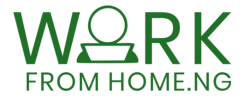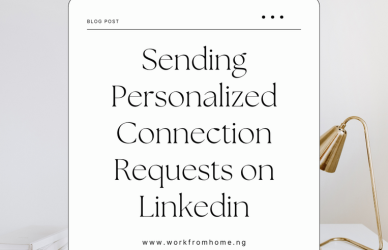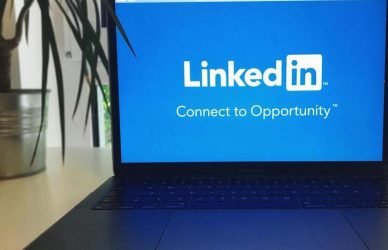If you don’t want to just wait to be noticed or compete endlessly for your clients’ attention, you want to put yourself directly in front of those who need what you offer, then this article is specifically going to help me solve that.
LinkedIn has become more than a networking site, it’s a B2B client acquisition tool professionals, freelancers, and service providers use to find clients on LinkedIn, and create consistent business opportunities. Yet, while millions of users post content daily hoping to attract attention, only a small percentage take advantage of one of LinkedIn’s most powerful client acquisition features, which is direct messaging.
Posting regularly on LinkedIn is great for awareness, but it doesn’t always lead to conversions.. The frustration for most professionals is that they create valuable content, get likes and views, but still struggle to get seen by the right people who should pay for their products or services.
This is where LinkedIn outreach also referred to as LinkedIn Direct Messaging comes in. Strategic messaging allows you to connect one-on-one with potential clients and business, start meaningful conversations, and position your service or product as a solution, without sounding awkward or pushy.
In this article, you’ll learn how to:
- Identify and research your ideal prospects,
- Craft personalized messages that get real responses, and
- Build genuine business relationships that turn into long-term clients.
Steps to LinkedIn Direct Messaging
1. Create a List of Your Ideal Prospects
Start by identifying the type of people or businesses that need your service. Who do you want to sell to? The industry you want to work with, the size of the company (small businesses or big corporations). This is called your buyer persona for LinkedIn outreach, a clear description of who your ideal client is. This first step is important because it helps you stay focused. Instead of reaching out to everyone, you’ll spend your time talking to the right people who are more likely to need what you offer.
2. Make a List of the Decision-Makers You Need to Reach Out To
Once you’ve identified the companies you want to work with, the next step is to find out who within those companies you should contact. Not everyone on a company’s team has the authority to make decisions, so your goal here is to identify the right people, the ones who can actually say “yes” to your offer.
These are known as decision-makers. Depending on your service, that person could be the HR manager, marketing manager, operations lead, or even the founder. For example, if you’re a social media manager, reaching out to the marketing head or brand manager makes more sense than contacting an intern or general employee. If you’re a virtual assistant, a small business owner or startup founder might be your ideal contact.
Take some time to go through the company’s LinkedIn page and note the people in relevant positions. You can also check their “People” tab to see who handles hiring, operations, or marketing.
- Company name
- Contact person
- Job title
- LinkedIn profile link
- Email address
- Date of outreach
RELATED: ChatGPT Prompts to Write a CV That Lands Interviews
3. Send a Thoughtful Connection Request
Don’t just send a connection request. Add a thoughtful note.
Note that LinkedIn allows 200-character limit per message (source) for a free account so take advantage of this to put personal conversation so you don’t come off as being too pushy.
A better approach is to show that you’ve taken a moment to notice something about them, maybe a recent post, an achievement, or something you genuinely appreciate about their work. This small effort makes your message sound human, not automated.
Something simple like:
Hello [Name], I saw the new project your team launched. Great work. I support businesses in optimizing their project operations. Let’s connect.
Hello [Name], I’ve enjoyed reading your recent insights on [topic]. I work with growing brands to improve project delivery. I’d love to connect.
It’s short, personal, and relevant. You’re not trying to sell anything. You’re simply starting a conversation on common ground and that’s what makes people more likely to respond to you.
4. LinkedIn Strategic Direct Messages
Now that your connection request has been accepted, your strategic messaging begins. The goal is to open a genuine, value-based conversation that positions what you do naturally without sounding like a salesperson.
Your first message should do three things:
- Acknowledge or reference something about them.
- Introduce what you do briefly.
- Create space for a conversation, not a pitch.
Here are a few message examples you can adapt:
Example 1:
Hi [Name], great to connect. I’ve followed your company’s work in [specific area], really impressive. I help teams like yours simplify project delivery and client communication. How’s your team managing projects currently?
Example 2:
Hi [Name], thanks for accepting my request. I saw your post about [specific topic]. I work with small business teams to organize their operations and marketing projects better. I would love to exchange ideas sometime.
Example 3:
Hi [Name], I’ve been learning about how [industry] brands are improving workflow efficiency. I help teams build practical systems for smoother execution. Is that something your team focuses on too?
Example 4:
Hi [Name], I noticed your company is expanding. This is great. I work with growth-stage teams to streamline processes as they scale. Would love to learn how your team’s adapting to the growth.
Example 5:
Hi [Name], good to connect. I work with [type of companies] to improve how they manage operations and communication. Curious, what’s been your biggest challenge lately in that area?
LinkedIn Premium vs Free Outreach: Which Works Better?
You don’t need a LinkedIn Premium subscription to build strong business relationships. The free version is more than enough when you know how to personalize your outreach. With LinkedIn Premium, however, you get access to features like InMail, which allows you to message people outside your network directly.
For most service providers or freelancers starting out, a well-structured LinkedIn outreach strategy using connection requests and personalized messages can deliver great results without upgrading. Focus on value, consistency, and relevance first.





